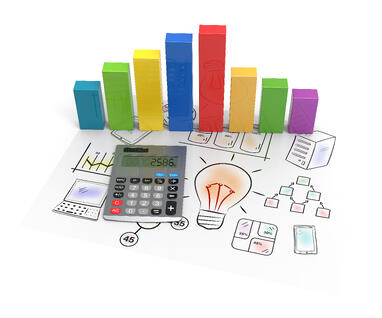
When Redbox, the movie rental kiosk company, raised their prices 25%, many analysts saw the move as desperate—predicting significant losses to market share in 2015 and 2016. At the same time, the company’s stock rose, with investors expecting customers to adapt to the higher prices. So who’s right? I have some predictions, but we’ll leave those for another blog. Today, I want to write about some of the fundamental questions companies need to ask before they embark on a new pricing strategy.
If you think pricing isn’t all that important, here’s something to ponder: a 1% increase in prices of Wal-Mart products ($10 on a $1,000 TV), assuming a demand around existing levels, would increase operating profits by about 20% and add about $48 billion to Wal-Mart’s market cap.
Companies rarely approach pricing from a “value to customers” perspective. Even when they do, they don’t fully exploit the potential of value based pricing for fear of backlash. For decades, airlines have understood the importance of pricing, and, in my opinion, outside of CPG companies (and some new tech entrants) have best implemented and used pricing as a tool for competitive advantage.
For any pricing strategy to succeed, you need a well thought out plan. Answer the following questions to get started:
1. Who is the customer?
a. While you might have customers you've served for a long time, you still need to ask yourself how people interact with your products. Are there touch points you’re currently ignoring? Are your current customers the ones you should be serving?
- How can you answer these questions? Start by observing and getting these discussions going.
- When’s the last time you did a Segmentation? If it’s been more than 2-3 years, that’s another potential starting place.
2. What are the closest competitive offerings?
3. What is the monetary value of your product to the market?
a. Think of this in terms of the savings your product could offer customers over competitor products. This doesn’t automatically mean a lower price. A higher priced product could offer savings in multiple forms—a few examples include a lower cost of ownership, lower maintenance costs, and peace of mind.
4. How are the different product features valued?
a. To figure this out, you can conduct choice exercises that replicate the market behavior of consumers. A good choice exercise must include, at a minimum, products that together control 60% of the market. Here’s another tip: make sure you also include future offerings and even some potentially ridiculous products you would never offer.
5. Based on the above steps, are there different customer segments? If yes, what are the optimal product and pricing tactics for each segment?
a. You also need to consider whether there are psychological price barriers for different customer segments that must be kept in mind.
Answering the above questions is a battle half won. For pricing to be truly successful, you need to go beyond coming up with tactics. Answering the next set of questions can be the difference between a good strategy and a great strategy.
1. What is the messaging and communication strategy for...?
a. Product value?
b. Pricing?
2. Is the above pricing strategy feasible? Think:
a. How crowded is the marketplace?
b. Is there a clear market leader?
c. How mature is the market?
d. Is your organization trying to maximize profits, gain a foothold in the market, or maximize share?
3. What is the action plan to react to competitive moves in the marketplace?
4. How do you plan on approaching end-of-life pricing for your products and services?
As you can see, building a thorough pricing strategy is not an easy task. At CMB and South Street Strategy Group, we take our pricing research seriously. We're experts at not only conducting research but also helping clients with rollout plans, and we have a lot of experience guiding clients from a wide range of industries through these steps.
If you’re interested in reading about this further, I’d highly recommend Thomas Nagle’s The Strategy and Tactics of Pricing and Rafi Mohammed’s The 1% Windfall. And, of course, I’d be more than happy to chat with you about pricing structures in the comments!
Abe is a Senior Project Manager, strategy junkie, and CrossFit enthusiast. He's recently taken up snowboarding so watch out if you're headed to the slopes.

